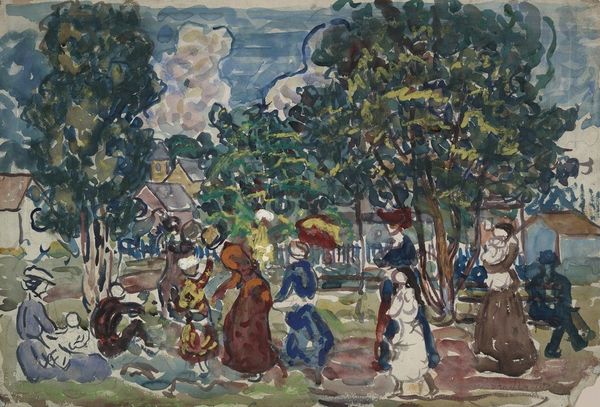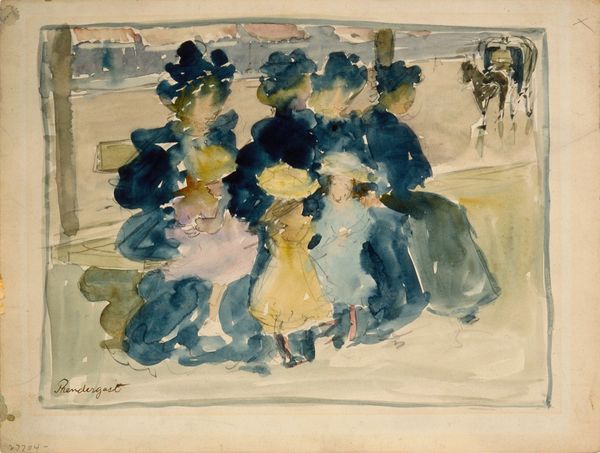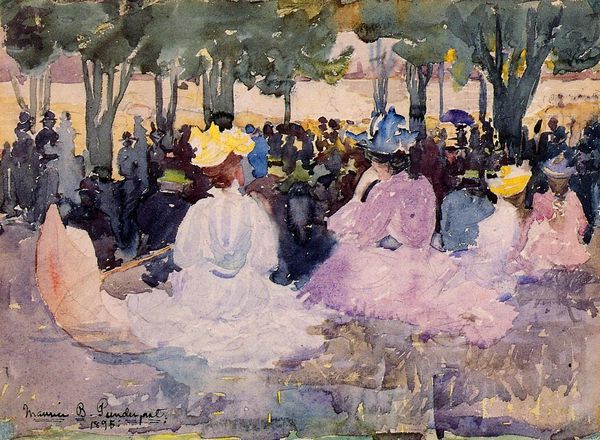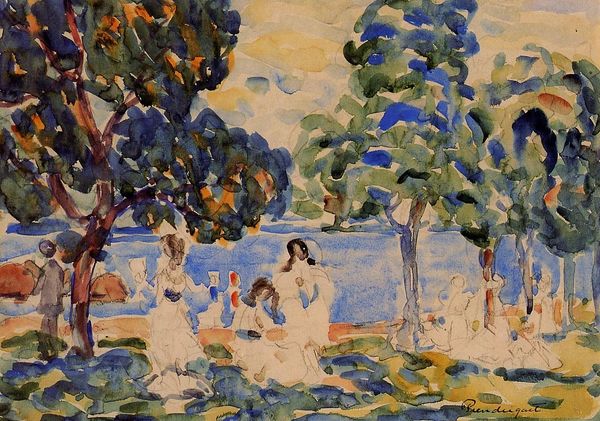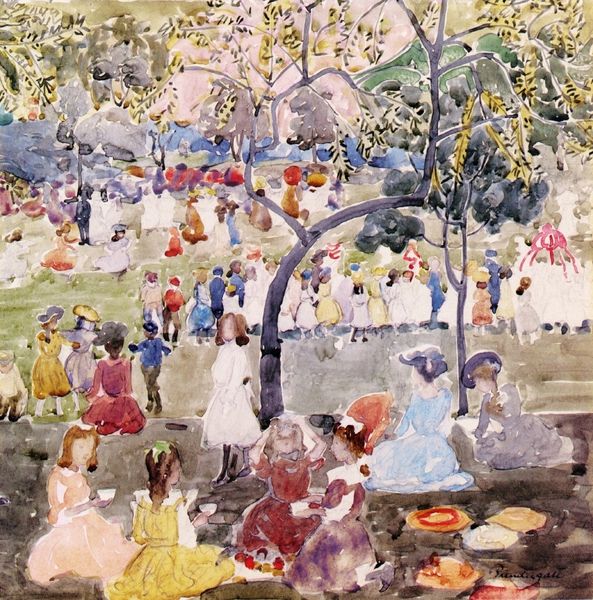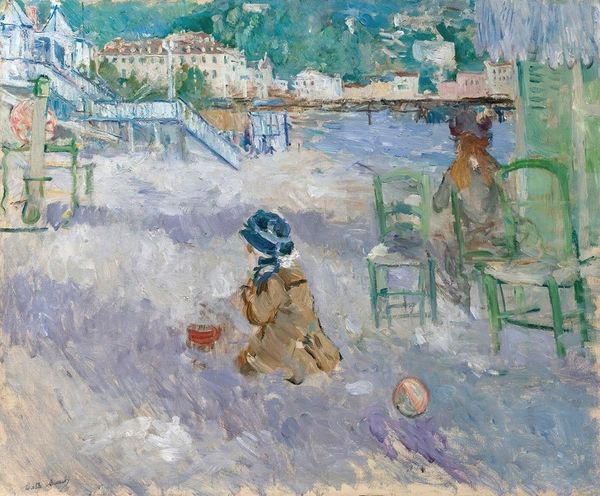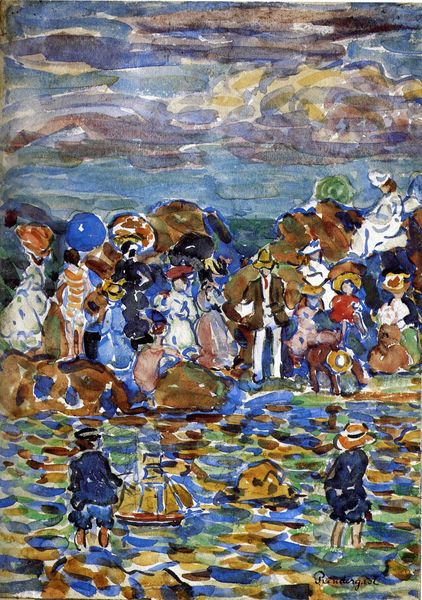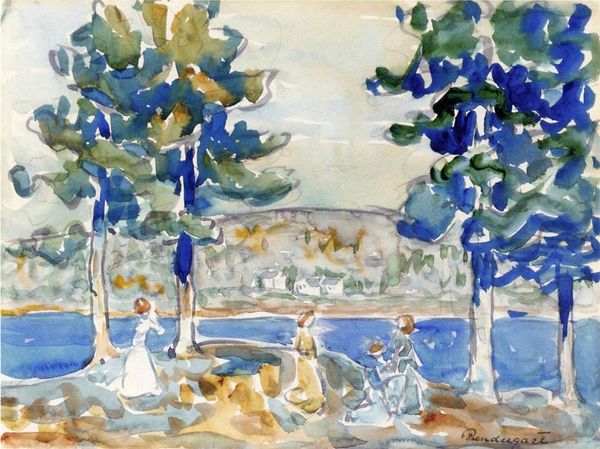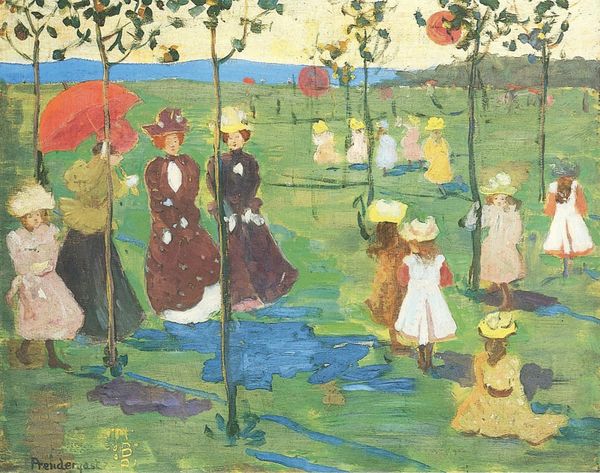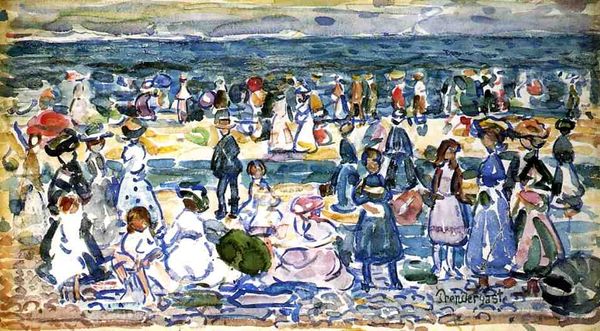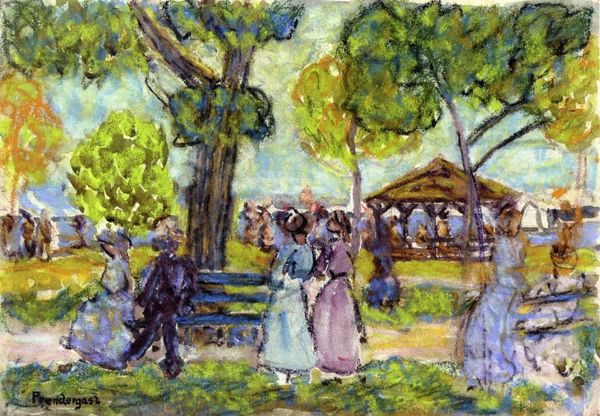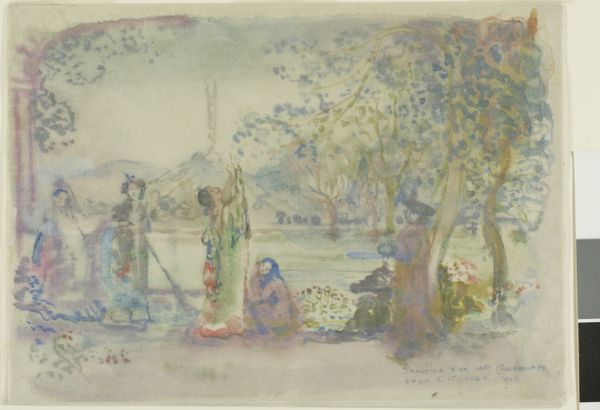
Dimensions: 27.94 x 36.83 cm
Copyright: Public domain
Curator: Welcome. We’re looking at Maurice Prendergast's "Road to the Shore," created in 1916. He rendered this work in watercolor, and it currently resides in a private collection. Editor: It's captivating! My first impression is of a fleeting, hazy summer afternoon. The composition feels both crowded and serene, with that fluid watercolor allowing the figures to almost melt into the landscape. Curator: Prendergast was working en plein-air for many pieces such as this, and one sees his application of a heavily diluted wash. One could analyze the pigments he selected-- are they modern? Readily available? The work is replete with shades of ochre, sienna, and what appear to be quite a lot of ultramarine. Editor: Blue and gold – quite symbolic actually. The blue might speak to spirituality or inner peace, while gold often relates to illumination or the divine. Perhaps these leisured figures sought spiritual replenishment by the sea? Their fancy hats act as individual beacons too! Curator: Their clothing seems quite stylized, almost uniform. It's also worth noticing the absence of distinct facial features and details on the figures themselves, it might even give a greater meaning of the concept of mass consumerism-- people defined by their things. Editor: Indeed, they lack individualized faces, yet, notice their groupings. Those clusters signal societal relationships and shared cultural identities. It speaks of a community finding shared experience. The fashionable hats speak to the social mores and norms they embody as much as they may conceal their own ideas. Curator: An intriguing point, especially given the road itself, a symbol of connection and transportation. Who were the suppliers of pigment at this time? How did these materials find their way into the hands of Prendergast? This could shed even further light on the artistic output here. Editor: Thinking about it now, “Road to the Shore” also functions as a metaphorical pathway, linking everyday life with moments of escape. Curator: It seems even with the limitations in detail, Prendergast has constructed an art piece that is complex, even with its use of readily available materials. Editor: Prendergast certainly creates a dreamy, symbolic snapshot of early twentieth-century leisure and belonging that endures even now.
Comments
No comments
Be the first to comment and join the conversation on the ultimate creative platform.
